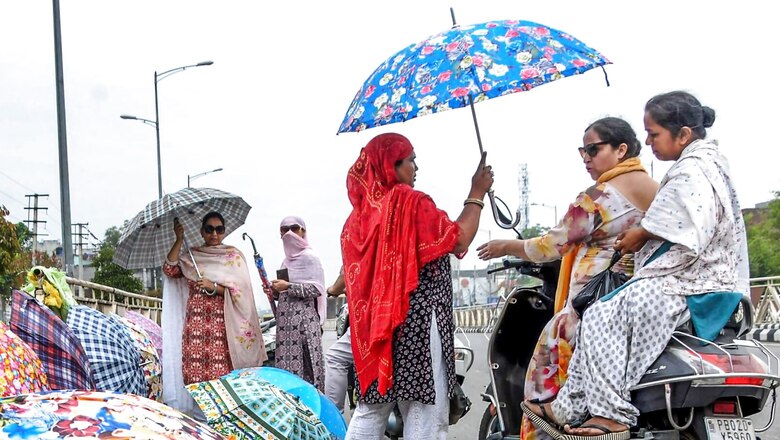
views
The India Meteorological Department (IMD) has said that the monsoon is likely to cover the entire country by July 6 even as it is yet to arrive in parts of Haryana, Punjab, and Rajasthan.
Deliberating on the matter, IMD director-general M Mohapatra said the monsoon has entered a good phase. “Over the past few days, rainfall has improved over the country, and now for the next week, we expect very good rainfall activity over entire northwest India, central India, entire Indo-Gangetic plains, and west coast.”
He added that the rainfall deficiency will be covered and on July 1, the monsoon will advance further to the entire Haryana and Punjab.
As per reports, the monsoon advanced into almost the entire northwest India, including Delhi, on Thursday. The deficiency was 14 per cent in the southern peninsula, 33 per cent in central India, 20 per cent in the northwest, and 21 per cent excess in the east and northeast India as of June 29.
The weather forecast department has also predicted “normal to above normal” rainfall over some parts of north and central India and most parts of the south peninsula. It said “normal to below normal” rainfall is most likely over most parts of east and northeast India and areas adjacent to east-central India and some parts of west south peninsular India.
Mahesh Palawat, vice-president (climate change and meteorology), Skymet Weather, told news agency PTI that westerly winds had disrupted the monsoon’s progress and it remained stalled over west Bihar for around eight to 10 days. The Delhi-NCR is expected to get plentiful rainfall in July and August, he added.
Monthly rainfall for July 2022 over the country as a whole is most likely to be normal, i.e., ranging between 94 and 106 per cent of the Long Period Average (LPA).
Monsoons in India are often called the lifeblood of India’s economy. From farming to irrigation nearly half of India’s farm output comes from summer crops dependent on the monsoon.
Rains Pummel Mumbai
The IMD has predicted “moderate to heavy rainfall” for Mumbai city and its suburbs and the possibility of “very heavy to extremely heavy” showers at isolated places in the next 24 hours. As per the official data, the island city received 179.13 mm rain in 24 hours till 8 am, followed by 140.58 mm in the western suburbs and 109.06 mm in the eastern suburbs.
The suburban train services, which were badly affected on Thursday night due to waterlogging in several low-lying areas of the city and suburbs, have resumed normal operations with some delays mainly in the suburbs, officials said.
The Brihanmumbai Municipal Corporation’s (BMC) G-North ward, which includes Dadar, Dharavi, Mahim and Matunga, received the highest 238 mm rain, while G-South ward, with Worli and Lower Parel, got 208 mm rainfall, a civic official said. The IMD Mumbai has predicted moderate to heavy rain in the city and suburbs, besides the possibility of very heavy to extremely heavy rainfall at isolated places for the next 24 hours from 8 am. The Central Railway has claimed that the suburban services were running as per schedule.
Strong Start in Delhi
The monsoon rolled into Delhi on Thursday, yielding the season’s first spell of heavy rain which covered the precipitation deficit and brought the maximum temperature down to 29.4 degrees Celsius, the lowest in around four months. Most parts of the city reported moderate to heavy rainfall.
The weather station at Lodhi Road gauged 107.6 mm precipitation during the same period. Ridge got 65 mm, Delhi University 58.5 mm, Pusa 44.5 mm, Palam 31.8 mm and Ayanagar 51.9 mm rainfall respectively.
Rainfall recorded below 15 mm is considered light’, between 15 and 64.5 mm moderate’, between 64.5 mm and 115.5 mm heavy’, and between 115.6 and 204.4 very heavy’. Anything above 204.4 mm is considered extremely heavy rainfall’.
The IMD said the southwest monsoon further advanced into Delhi, Uttar Pradesh, Himachal Pradesh, Jammu and Kashmiri, some parts of Punjab, Haryana and Rajasthan on June 30.
(with inputs from PTI)
Read all the Latest News, Breaking News, watch Top Videos and Live TV here.


















Comments
0 comment